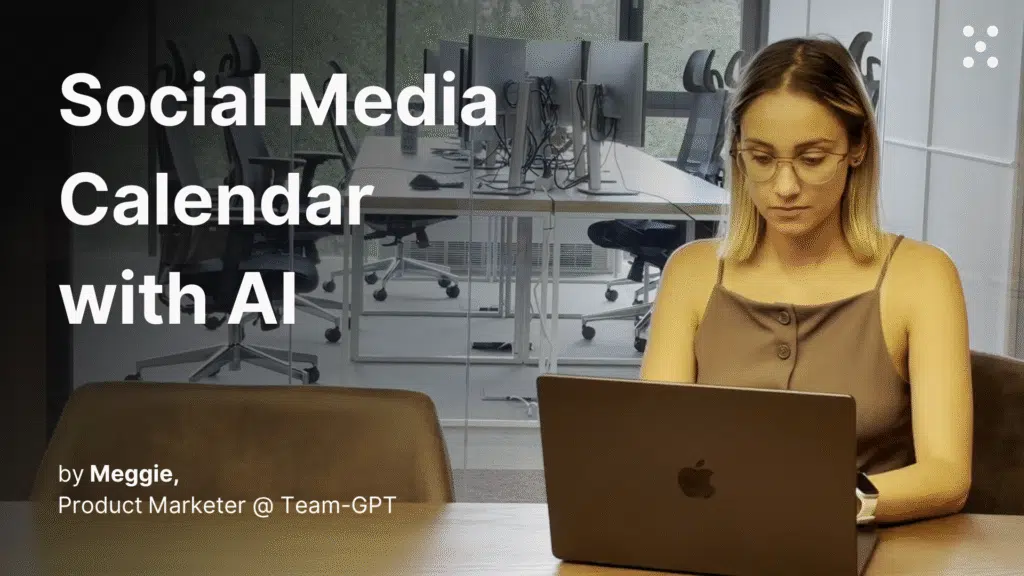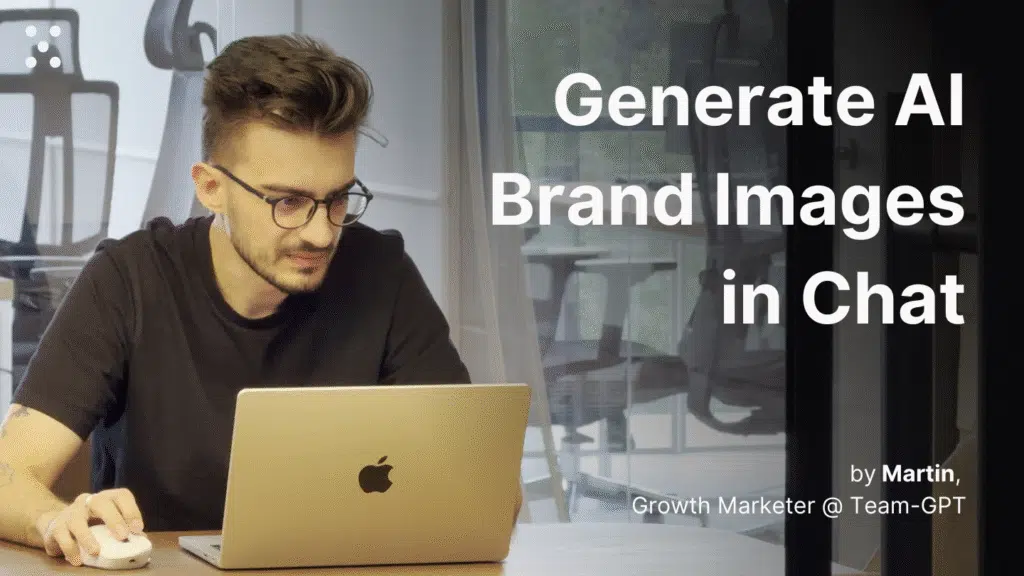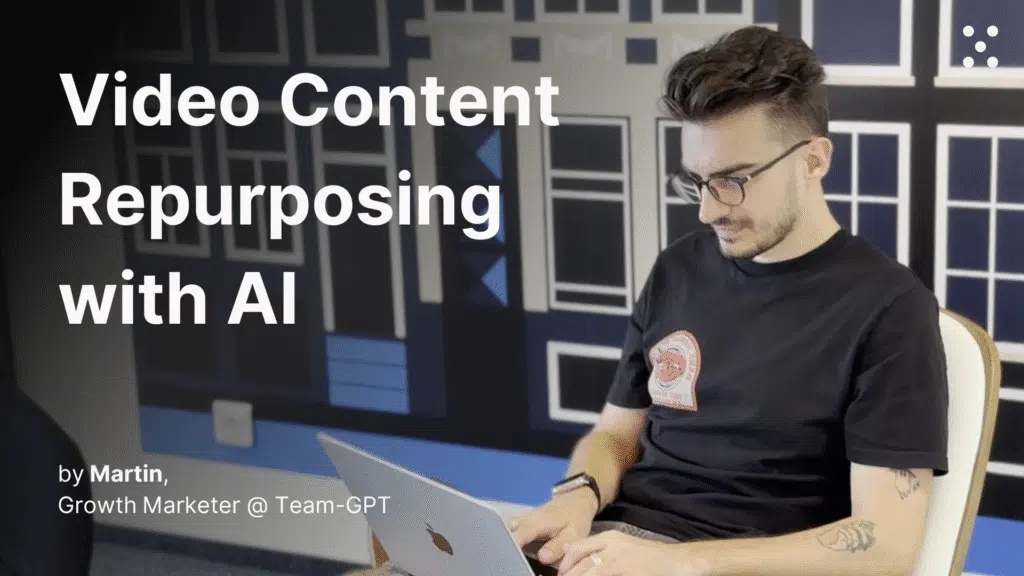Playbook
Create Google Search Ads copy with Team-GPT
Create Google Search Ads copy with Team-GPT
Set up brand context and generate high-converting ad copy your team can iterate on
Step 1. Set up your Team-GPT Project knowledge
Navigate to your Project in Team-GPT (this could be for your company, a specific campaign, or a client you’re working with). Click the “Project knowledge” button to open the sidekick.
Add your essential context:
- Brand guidelines (voice, tone, visual style, messaging rules)
- Target audience profiles and demographics
- Product or service information
- Previous high-performing ad examples
- Campaign objectives and KPIs
- Competitor analysis and positioning
- Keywords and search terms
This context gets referenced automatically in every chat within the project, so you only need to set it up once.
Step 2. Prep your prompt
Instead of writing prompts from scratch, use Team-GPT’s built-in Prompt builder. Click the “Tools” button in the left sidebar to access it. Describe your task in simple words. For example: “I need to turn my draft idea into a polished LinkedIn post.”
The Prompt builder will ask follow-up questions to gather more context. After that, the tool will generate the perfect prompt.
Save your prompt to the Prompt library and share it with your team for future use. You can find the Prompt library in the sidekick menu or when you type “/” in the chat input field.
You are an expert Google Ads copywriter with extensive experience creating high-converting search campaign ads that maximize click-through rates while adhering to Google's character limits and best practices.
Create compelling Google Ads search campaign copy based on the following information:
Target audience: {{ target_audience }}
Keywords: {{ keywords }}
Landing page URL: {{ url }}
Campaign goal: {{ campaign_goal }}
Desired tone: {{ tone }}
For each ad, provide:
- 15 headline options (max 30 characters length each)
- 4 descriptions (max 90 characters length each)
- A display URL with path fields (max 15 characters per path)
- A brief explanation of why this ad copy will be effective for the target audience
Ensure all copy:
- Includes at least one primary keyword naturally
- Contains a clear call-to-action
- Highlights a unique value proposition
- Follows Google Ads character limits
- Aligns with the landing page content at the provided URL
- Resonates with the specified target audience
- Supports the stated campaign goal
- Overall follows the guidelines provided as links in the context:
- https://support.google.com/google-ads/answer/9510373?hl=en#zippy=%2Ccreate-dynamic-search-ads%2Ccreate-search-ads%2Ccreate-standard-ad-groups%2Ccreate-dynamic-ad-groups%2Cenhance-ads-with-assets%2Cselect-your-targeting%2Cset-up-your-bidding
- https://support.google.com/google-ads/answer/1704389?hl=en&ref_topic=10274148
- https://support.google.com/google-ads/answer/1704392?hl=en&ref_topic=10274148
Create 3 distinct ad variations that could be effectively A/B tested.
Start a chat with a specific campaign briefing. If you have used it somewhere already you can link it as context from Context Library. The AI will reference all the project knowledge you added earlier, ensuring the content aligns with your brand guidelines, audience preferences, and platform best practices.
Watch as the AI creates platform-specific content that goes beyond basic posts – you’ll get complete packages with timing, visuals, and engagement strategies.
Step 3. Generate your Google Search Ads copy
Run your saved prompt by typing “/” in the chat and selecting it from your prompt library. The AI will ask for dynamic variables like target audience, keywords, campaign URL, goal, and tone.
Fill in these details based on your current campaign needs. The AI will reference all the project knowledge you added earlier, ensuring the ad copy aligns with your brand guidelines and audience.
Step 4. Review and iterate on the output
The AI will generate 3 distinct ad variants, each with 15 headlines and 4 descriptions that meet Google’s character requirements. Each variant will include an explanation of why it will be effective.
Your team members can jump into the same chat to:
- Suggest improvements to specific headlines or descriptions
- Test different value propositions
- Adjust messaging based on new campaign priorities
- Add seasonal or promotional elements
Tips for better results
- Include performance data: Add your top-performing ads from previous campaigns to your Project knowledge. The AI will spot patterns and create similar high-converting copy
- Test different angles: Ask for variants focused on different benefits (price, quality, speed, convenience) to see what resonates with your audience
- Use dynamic keyword insertion: Tell the AI to create headlines that can accommodate dynamic keyword insertion for better relevance
- Consider seasonal timing: Ask the AI to incorporate timely elements like holidays, sales periods, or industry events
- A/B test systematically: Use the different variants to test one element at a time (headlines vs descriptions vs calls-to-action)
- Include negative keywords: Ask the AI to suggest negative keywords based on your ad copy to improve targeting



